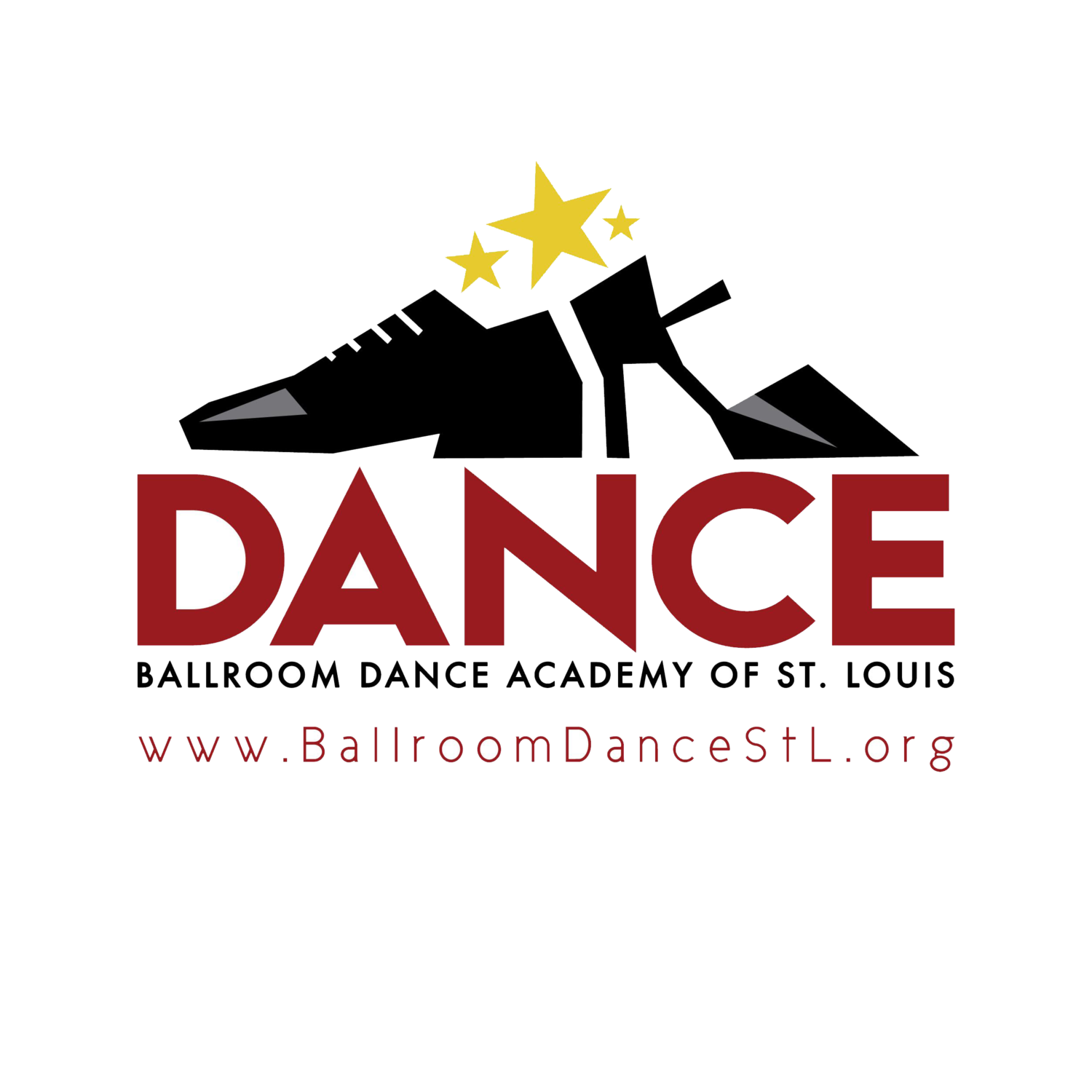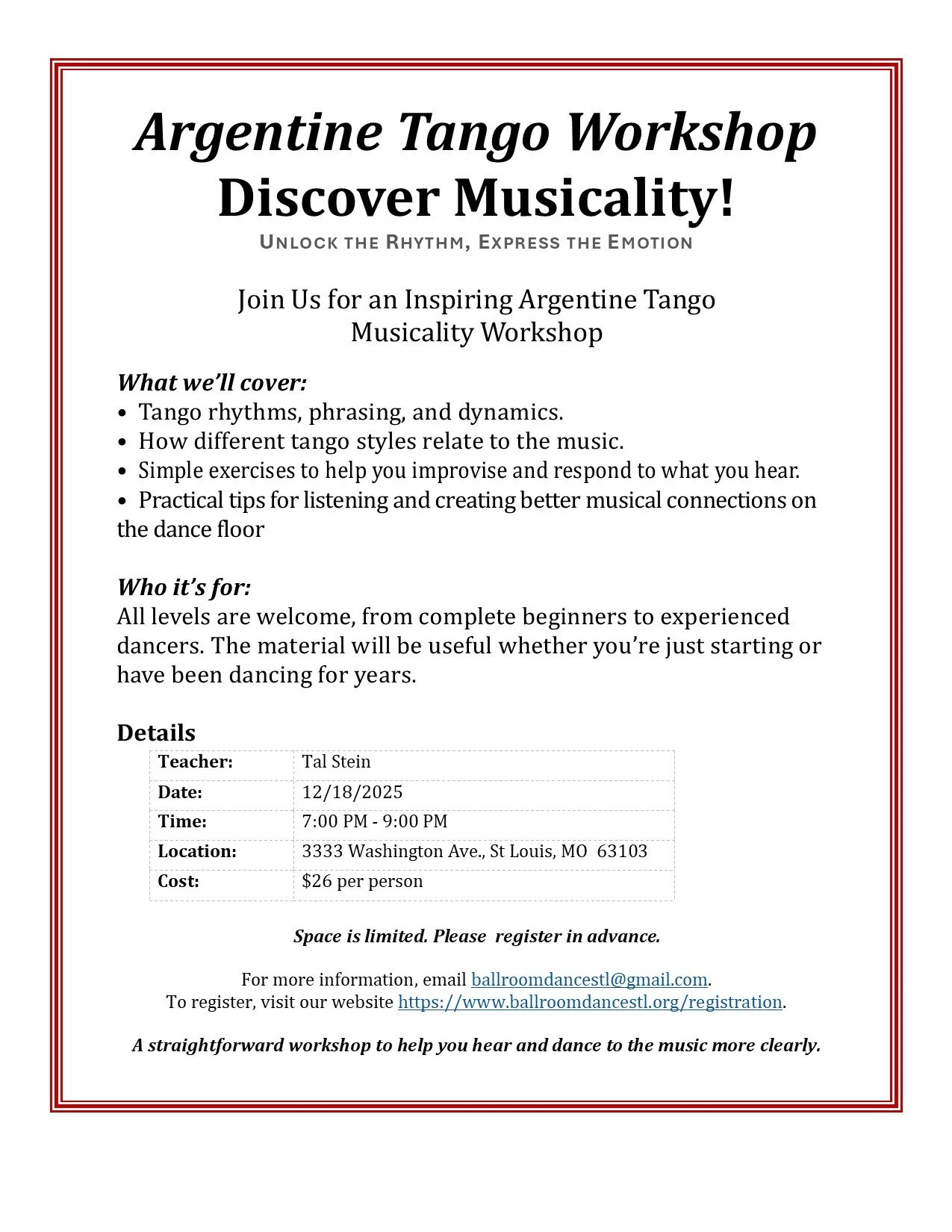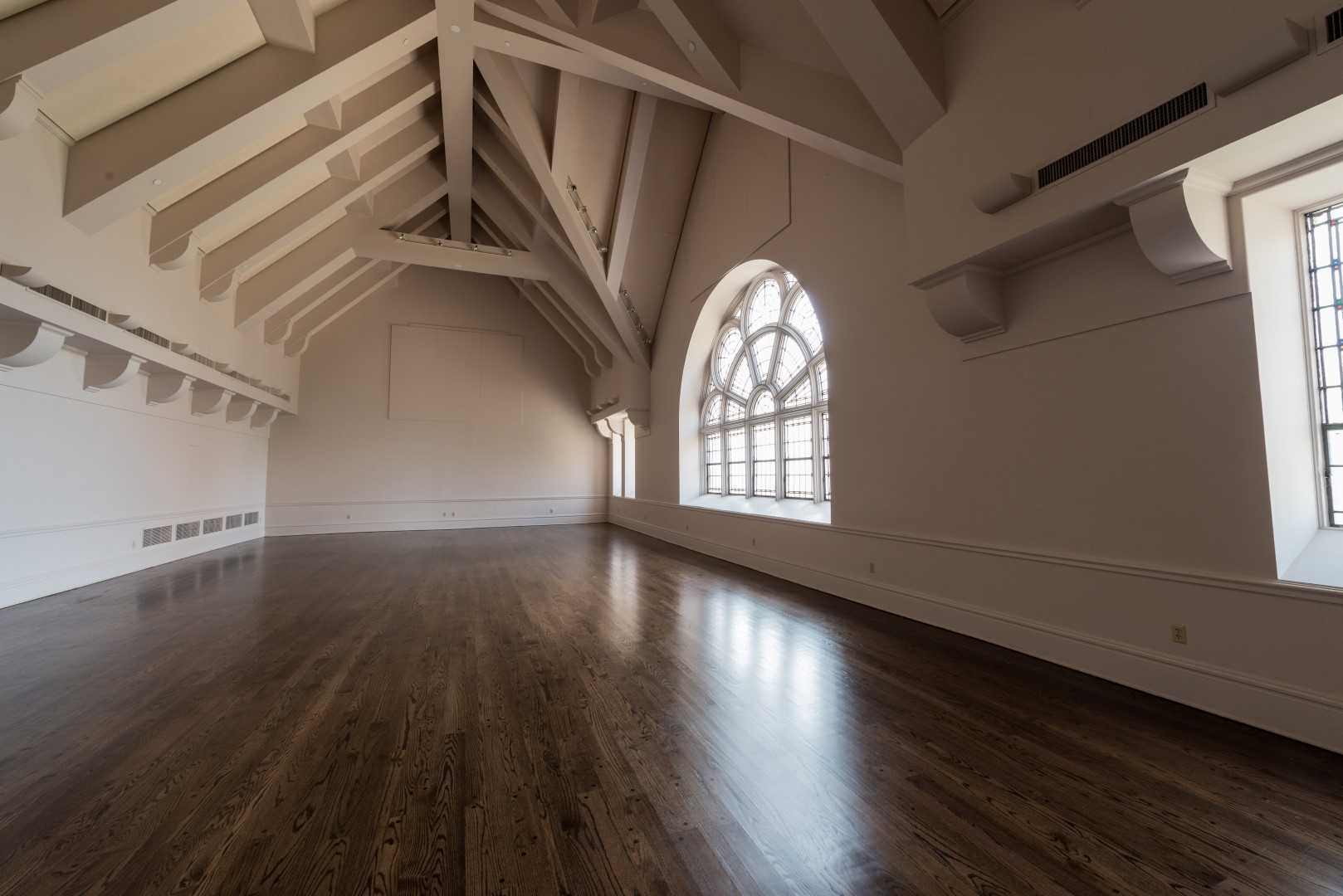Group Class Information
All of BDASL'S dance classes are group lessons and are taught in monthly or 6-week sessions. Registration and payment for the full session is due a minimum of 24 hours before the first class. We are unable to accept partial payments.
IMPORTANT: Prior to attending their first class, new dancers need to fill out the
one-time electronic Waiver Form (link).
Special Argentine Tango Workshop: Dec 18
(note different location)
Important Update: Tuition Price Adjustment
We hope you are doing well and are enjoying your classes. We genuinely value your passion, commitment, and the vibrant energy you bring to our dance community.
We wanted to let you know about an upcoming change to our class pricing. Due to increased operational costs and our ongoing commitment to providing the highest quality instruction and facility experience, we will be adjusting our tuition rates. The new pricing will go into effect for classes starting on January 1, 2026.
We understand that any increase can be challenging, and we have worked hard to keep the adjustment as modest as possible while continuing to offer exceptional classes, workshops, and events.
If you have any questions or concerns about this change, please do not hesitate to reach out to us.
We appreciate your understanding and continued support as we strive to make our dance studio the best it can be for all our students.
Thank you for being an essential part of our dance family.
Adult Dance Classes January
Tuesdays - with Andrea
4-week session: 01/06/2026-01/27/2026
6-7pm: American Tango and ChaCha
(Beginner Bronze level; no experience needed)
7-8pm: Waltz and Rumba
(Intermediate Bronze level; requires previous dance experience with these dances, e.g. 2 months of prior beginner class with BDASL)
8-9pm: American Tango and ChaCha
(Pre-Silver and Silver; requires prior experience and permission from the instructor.
Please contact us at ballroomdancestl@gmail.com or approach Andrea in class)
Thursdays - with Tal
6-week sessions: 01/08/2026 - 02/12/2026
7-8pm: Argentine Tango 101
(Beginner level; no experience needed)
8-9pm: Argentine Tango 102
(requires some experience with Argentine Tango)
Children dance classes
[children ages 7-12 years old, no experience required]
There are no children’s classes scheduled.
Course descriptions
Bronze Beginner Ballroom: This is a ballroom dance class for new dancers and those with limited ballroom dance experience. The different dances taught in this class are: Waltz, American Tango, Foxtrot (great wedding dance!), East Coast Swing (also a great wedding dance), American Rumba, and ChaCha.
Bronze Intermediate Ballroom: This ballroom class requires familiarity with the basics steps and builds upon Bronze-Beginner material, hence students should have attended the Bronze Beginner class (for the same set of dances) for a minimum of 2 months before proceeding to the Bronze Intermediate level.
Silver Beginner Ballroom: This ballroom class introduces steps from the silver syllabus. Good familiarity with the steps from the bronze syllabus are required (please get instructor approval before registering for this class).
Silver Intermediate Ballroom: This ballroom class builds upon the foundational silver steps introduced in the Silver Beginner Ballroom class - instructor approval required. [currently not offered]
Argentine Tango 101: In this class, students will be introduced to the fundamentals of tango, including movement, connection, walking steps, basic elements of turning and navigation. Students will gain improvisational skills, historical background and social dance etiquette.
Argentine Tango 102: This class will expand on the fundamentals of Argentine Tango 101 and introduce more vocabulary and concepts. There will also be more focus on musicality, technique, styling and embellishments.
Intro to Salsa: This class is appropriate for those who have little to no prior Salsa dance experience. Concepts taught in this class provide the building blocks for social salsa dancing and other classes such as Salsa Rueda. You will be introduced to proper footwork, technique and basic step patterns to give you confidence and a solid dance foundation. Footwork: forward and back basic, side basic, fifth position breaks, right turn, left turn, cross body lead, Miami walk and New York walk. Partnering: basic step, right turn, left turn and cross body lead. [currently not offered]
Beginner Salsa and Salsa Rueda: This class will set you up for dancing salsa either with a partner or Rueda with a group. Each class begins with a warm-up to learn new steps and practice the footwork necessary for partnering. Following the warm-up, the first half of the class focuses on beginning level moves and combinations with a partner. The second half of class focuses on using the steps from the first half of class in Rueda. Rueda is a popular dance where pairs of dancers form a circle and execute dance moves called out by one person. [currently not offered]
registration
Students must pre-register (sign up) and pay online (see Class Registration & Payment tab) at least 24 hours prior to the first class of the session. No in-person sign-up or cash/check payments are available. All classes require a minimum of 6 registered students. In the event that a class can not be held due to insufficient enrollment, fees that have been paid will be repaid.
Cost break-down (prices per person, payable by the session):
Bronze Ballroom Levels, Swing 101, and Ballroom Ballet: $13/class
Argentine Tango 101, 102: $14/class
Silver Ballroom Levels: $14/class
Children’s Ballroom: $12/class
Refund policy
All payments for classes, workshops and events are final and non-refundable. This policy helps us to maintain the highest standard of instruction and a quality dance environment.
Class payments are made in 3-5 week sessions for Tuesday’s ballroom classes, and 6 weeks sessions for Thursday’s Argentine Tango classes. We are unable to accept partial payments. For any concerns, please contact us via email, ballroomdancestl@gmail.com.
do I need a partner?
We typically rotate partners during our dance classes. Of course, couples not comfortable with switching partners are not required to do so.
Why do we even rotate partners? As a "social" dance studio (as opposed to dance studios that focus on competitive dancing), BDASL has highly valued the concept of changing, i.e., rotating partners throughout a dance class. This not only makes class more fun and "social", but also makes everyone a better dancer. Rotating partners is a very common concept in many ballroom dance studios around the country. Instead of coming up with our own list of benefits, here are two great articles on the advantages of rotating:
- https://www.nannettesballroomdance.com/partner-changing/ (a bullet-point list of all the advantages of changing partners during a class)
- https://socialballroom.dance/you-dont-need-a-dance-partner (a blog post by a social ballroom dancer)
What to wear
Clothing: Wear comfortable clothing that allows movement across the dance floor.
Shoes: Do not wear flip flops or backless shoes as you could walk out of them. Wear enclosed shoes with low heels. Spike heels are not allowed. Leather soles are best, rubber soles can make it more challenging (“Tom’s” are also surprisingly good dance shoes).
Location
We are having classes in the Grand Hall at The Grandel Theatre (3610 Grandel Ave, St. Louis, MO 63103). There are dedicated parking lots (e.g. NW of the building, across the street, free for Grandel-users) and ample street parking (meter is free after 7pm). As stated above, the Grandel is generally locked these days. Please arrive 5-10 minutes before the scheduled class time, as you might not be able to enter the building after the class has started since we’re dancing on the 2nd floor and will likely not hear you knocking.
“Of the activities I’ve done in life and things I’ve learned, nothing has been as challenging as ballroom. Those who watch often think dancing is something that can be learned in two sets of 6 weeks lessons…. When this doesn’t happen, many give up, but that’s another story. It’s well worth the effort to go beyond the two sets of 6 lessons and it’s certainly worth the effort to practice proper engagement of abs and other core muscles daily, and not just when getting into position for a smooth dance. ”




